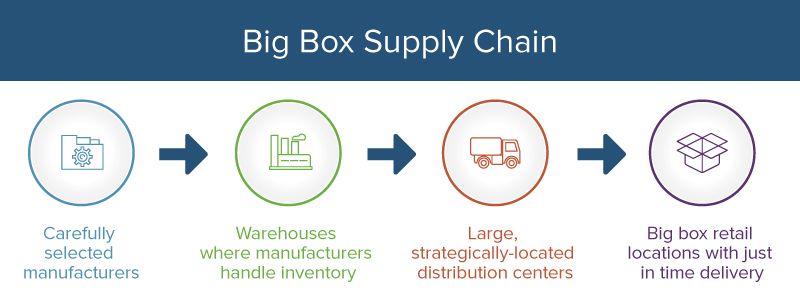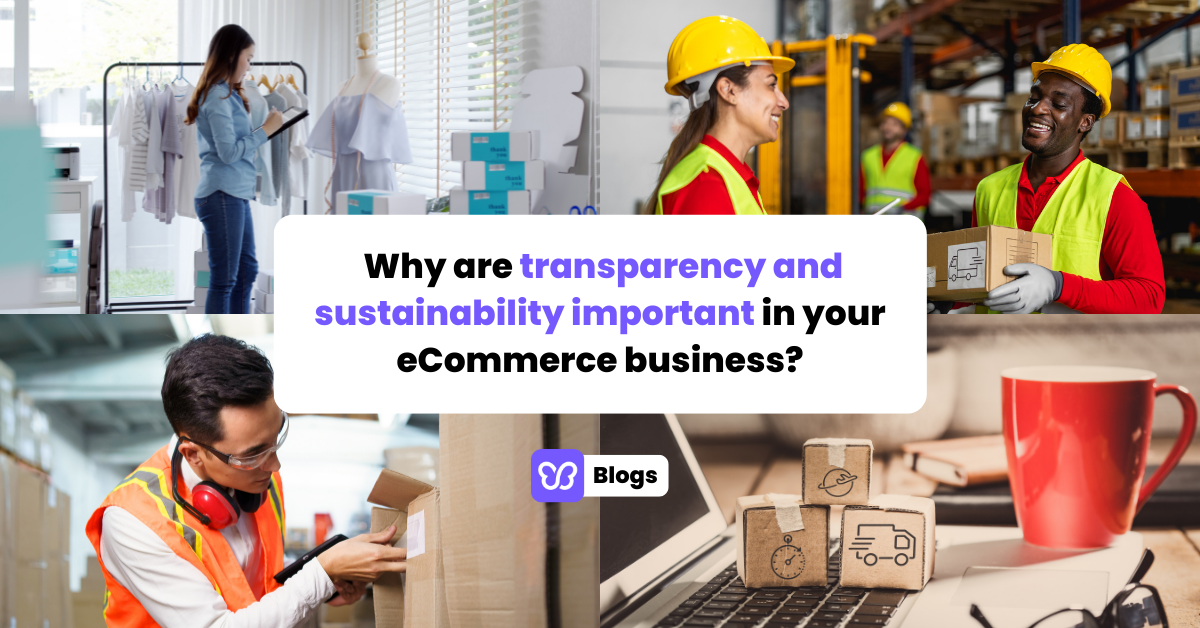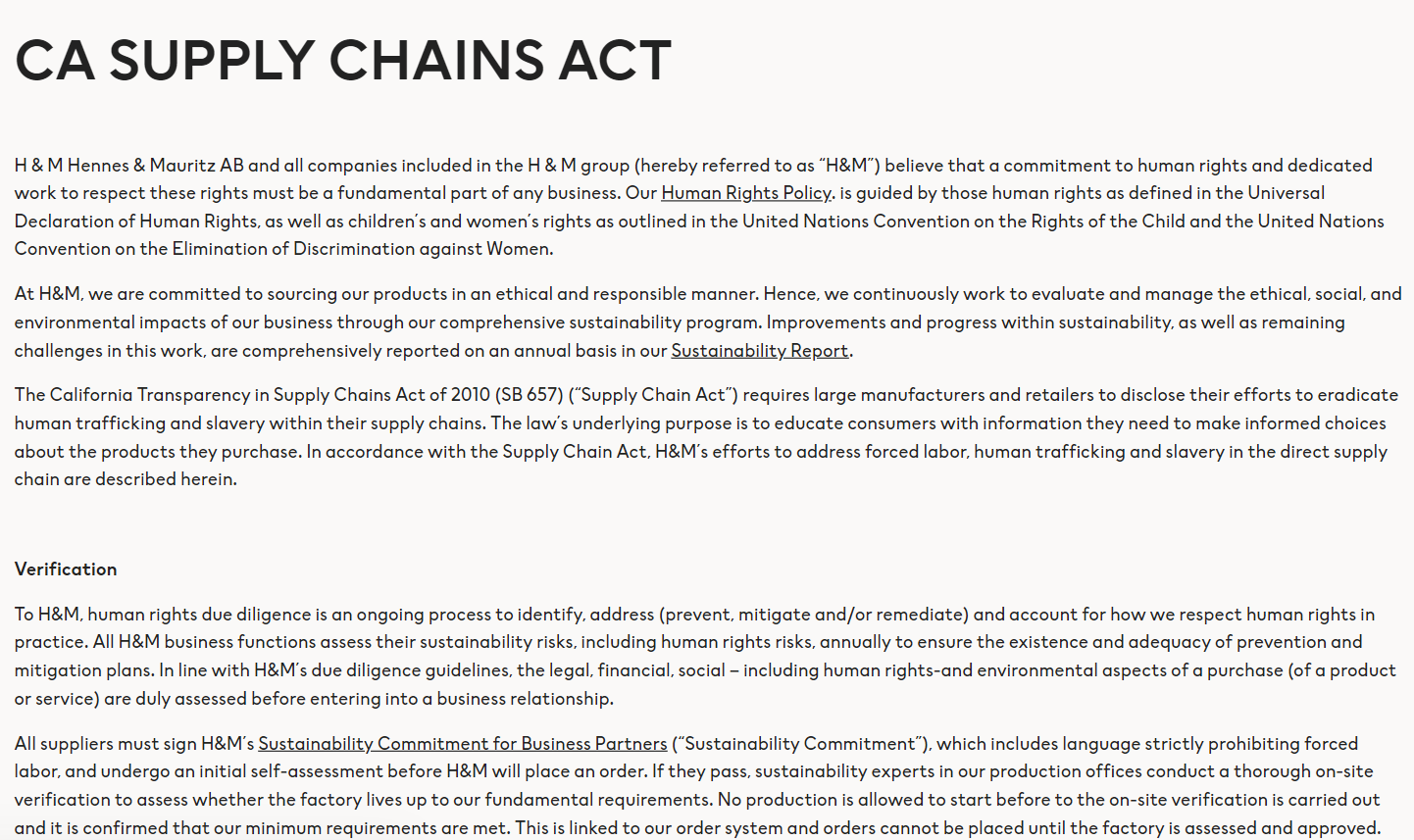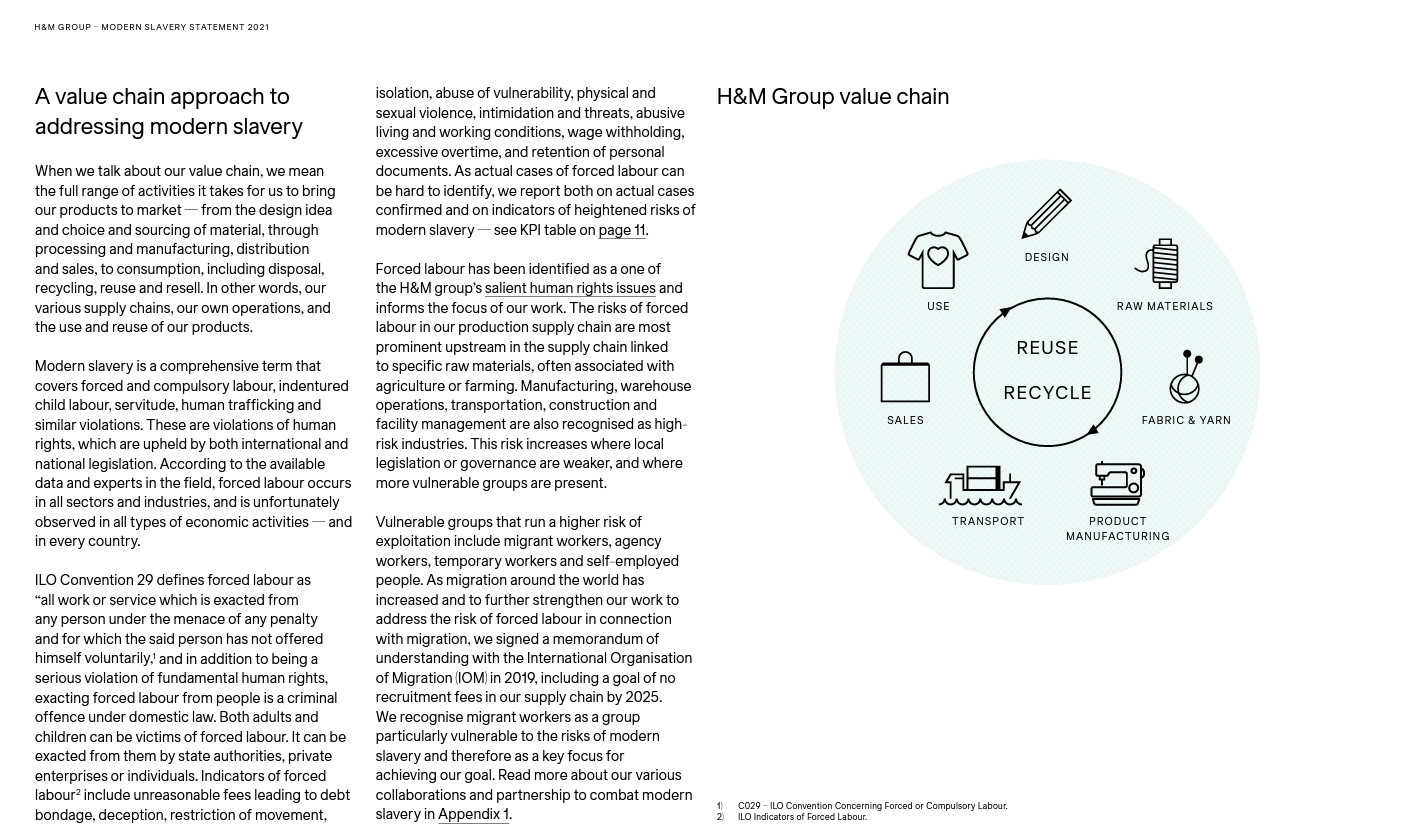Consumer behaviors are changing. They don't just focus on how your products look on the outside... they want transparency. They want to know how you run your business. And that includes sustainability in your supply chain.
45% of consumers said in a survey that they want to find brands that are eco-responsible in 2020. This means that building a business that only cares about profit is a no-no! Because having a successful eCommerce business doesn't mean you need to sacrifice sustainability.
So, if you want to build a sustainable brand... you'll learn:
- What is a supply chain?
- What is the importance of transparency and sustainability in your brand?
- How to build a transparent supply chain in 5 ways?
I'm sure you're excited to find out more. So, let's deep dive! First...
What are supply chain, transparency, and sustainability?
Let's talk about the supply chain first. This is an example of what it looks like as a diagram.

(Source)
A supply chain refers to resources, individuals, technologies, and organizations to produce and sell your products.
It includes all the processes from sourcing, manufacturing, and retailing until delivery—literally everything from the get-go.
Now, what's sustainability?
Sustainability is meeting human needs while being environmentally friendly. This also means preserving natural resources for future generations.
While transparency refers to allowing others to see through your actions. For example, disclosing your sourcing materials.
And now that you already know supply chain, transparency, and sustainability... why are they important?
Why are transparency and sustainability important in your eCommerce business?

1. Build customer loyalty
It was reported that 90% of consumers surveyed said they're loyal to brands that align with their values.
What does it mean for you? When people know what you stand for, your consumers want to remain loyal to your brand.
And you can achieve this through transparency and sustainability. If your consumers know the action you take to make an impact... that will make them support you.
Aside from benefits to your business, improving supply chain execution can also...
2. Reduce carbon footprint
Reducing your carbon footprint is not just great for the environment... but it can eliminate some business costs.
The good news is you don't need to go big immediately. You can start making small changes. For example, reusing and recycling packaging materials.
And, of course, no effort is small regarding being eco-friendly. No matter how small you think your actions are, you can still...
3. Make a social impact
Transparency requires businesses to speak up on what they stand for. It's not only about speaking up but also about doing the work. And whatever it is you're trying to change... you can make an impact!
You're making an impact if you're enhancing your supply chain management to give way for more eco-friendly options like using eco-friendly shipping supplies.
It's all about the action you're taking to make the world a better place as a business owner. So, you probably want to get to the juicy part of this blog...
How to build transparent and sustainable supply chains?
1. Assess your current supply chain process
Before knowing what are the things to improve... you need to assess your current supply chain process. This includes your suppliers, manufacturers, and more.
If you're handling supply chain data, visualize it and ask yourself these:
- Are there new laws that my business needs to comply with?
- Are there technologies we're using releasing a lot of carbon emissions?
- Is my business not recycling enough?
- Is there any way to make my supply chain more efficient?
- Does my company have a complex supply chain?
- What are the risks?
The point is that assessing your current process will help you determine the changes you need to make. So, identify the gaps you need to fill to strengthen supply chain operations.
Another way to improve your modern supply chain is...
2. Create sustainability goals
Creating goals will give you a more solid direction and vision of what you want to achieve. That will also help you develop the plans you need to take.
Once you have your sustainability goals, you can create SOPs or Standard Operating Procedures for your company.
For example, you want to reduce carbon emissions. You can impose measures to ensure the efficient shipping of the products to reduce returns.
But to achieve your sustainability and transparency goals, you must involve your suppliers. This leads us to our next step...
3. Look into your suppliers
You don't want your company to be involved with suppliers that conduct unethical practices, right? So, you must look into your supply chain partners.
This is important in ensuring that your suppliers align with the changes you want to make. Doing so will give company stakeholders more confidence in investing and improve their reputation.
Some things you need to consider are:
- Sourcing of materials
- Ethical practices
- Labor practices
- Eco-friendliness
- Business conduct
These are the things you should consider when working with suppliers or manufacturers. Make sure you can meet them in the middle. That way, you can achieve your sustainable goals!
And once you improve your supply chains, you need to...
4. Disclose the supply chain process to your customers
Disclosing your supply chain process helps customers decide if they should buy from your eCommerce business. Some states require a supply chain disclosure.
Transparency in supply chain provisions involves openly sharing information about the supply chain - its origins, production processes, and ethical considerations within a supply chain.
This practice aims to enhance accountability, sustainability, and informed decision-making, aligning with regulatory requirements and ethical business practices.
An example is from California, which is the California Transparency in Supply Chains Act.
This encourages consumers to fight against unethical practices... such as modern slavery and human trafficking.
This regulation is also making some companies audit their suppliers. Why? To ensure that their suppliers are complying with the laws.
An example is the big clothing brand H&M.

The brand put a CA Supply Chains Act on the website to inform customers about their compliance. Not only that... but they also uploaded a modern slavery statement on a PDF.

In this report, they disclosed their efforts in eradicating modern slavery and upholding human rights in their business.
This way, customers know they're taking a stand against these issues. This can also entice more customers, job seekers, or investors who share the same cause.
Supply chain information sharing is a great way to show how you give importance to these matters. And that says so much about your brand values.
And lastly...
5. Continue improving your supply chain efficiency
It doesn't end there. You need to improve your supply chain from time to time. You can't make it perfect in just one try.
Also, new laws and regulations are popping up here and there that you must comply with. And with the current socio-political atmosphere, customers are demanding more from brands.
Don't stop improving because, remember... when you make a positive impact, you also allow your customers to make one by supporting your business.
So, ready to tackle more sustainable options?
Build a transparent and sustainable supply chain with these tips!
Running a business doesn't mean you only need to focus on making profits. Of course, that's also crucial to keep your business afloat.
But you can also make a positive change by improving your supply chain! And through that, you can attract customers with the same values as your brand.
To help you become a more sustainable brand, here are...





